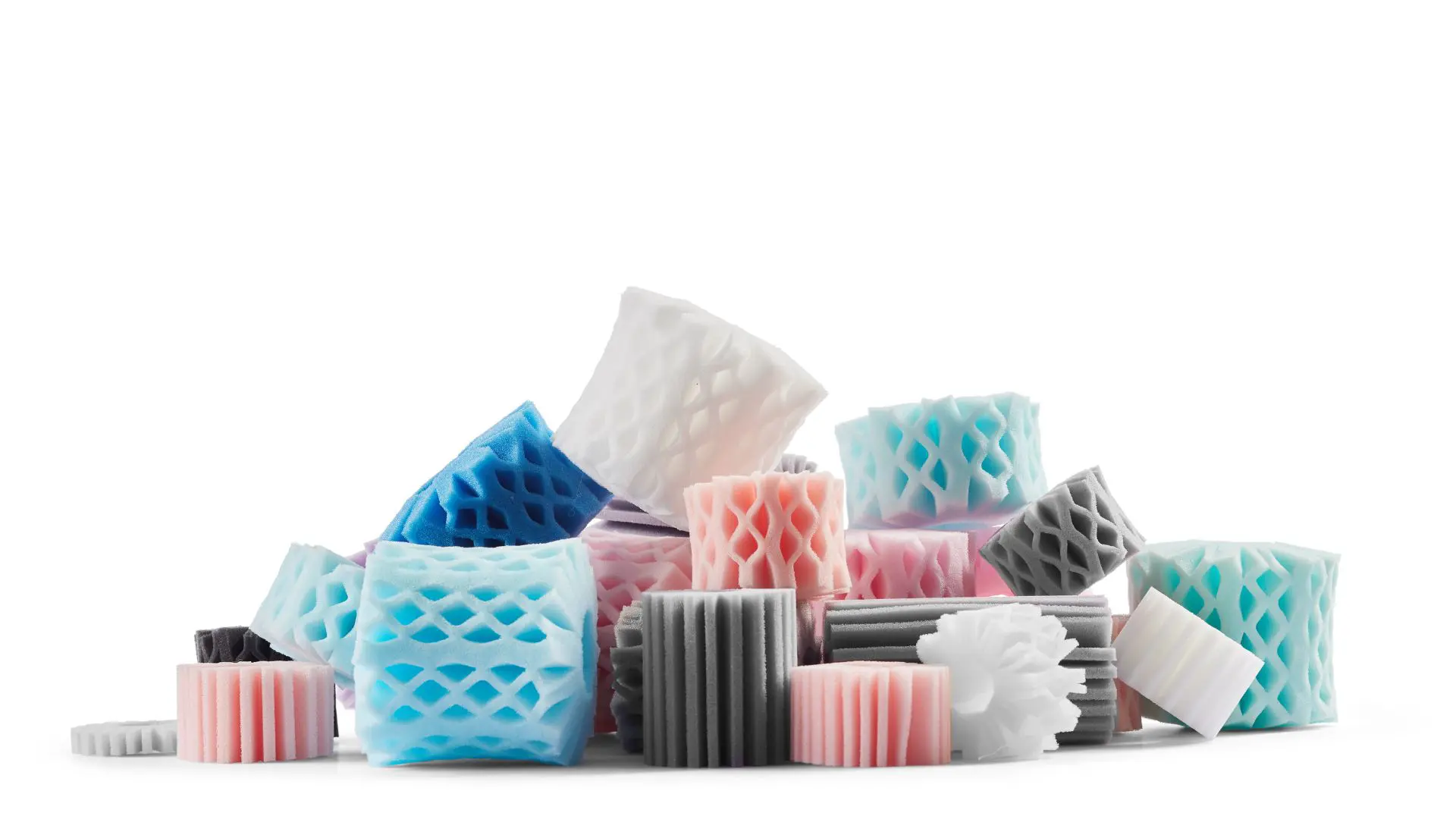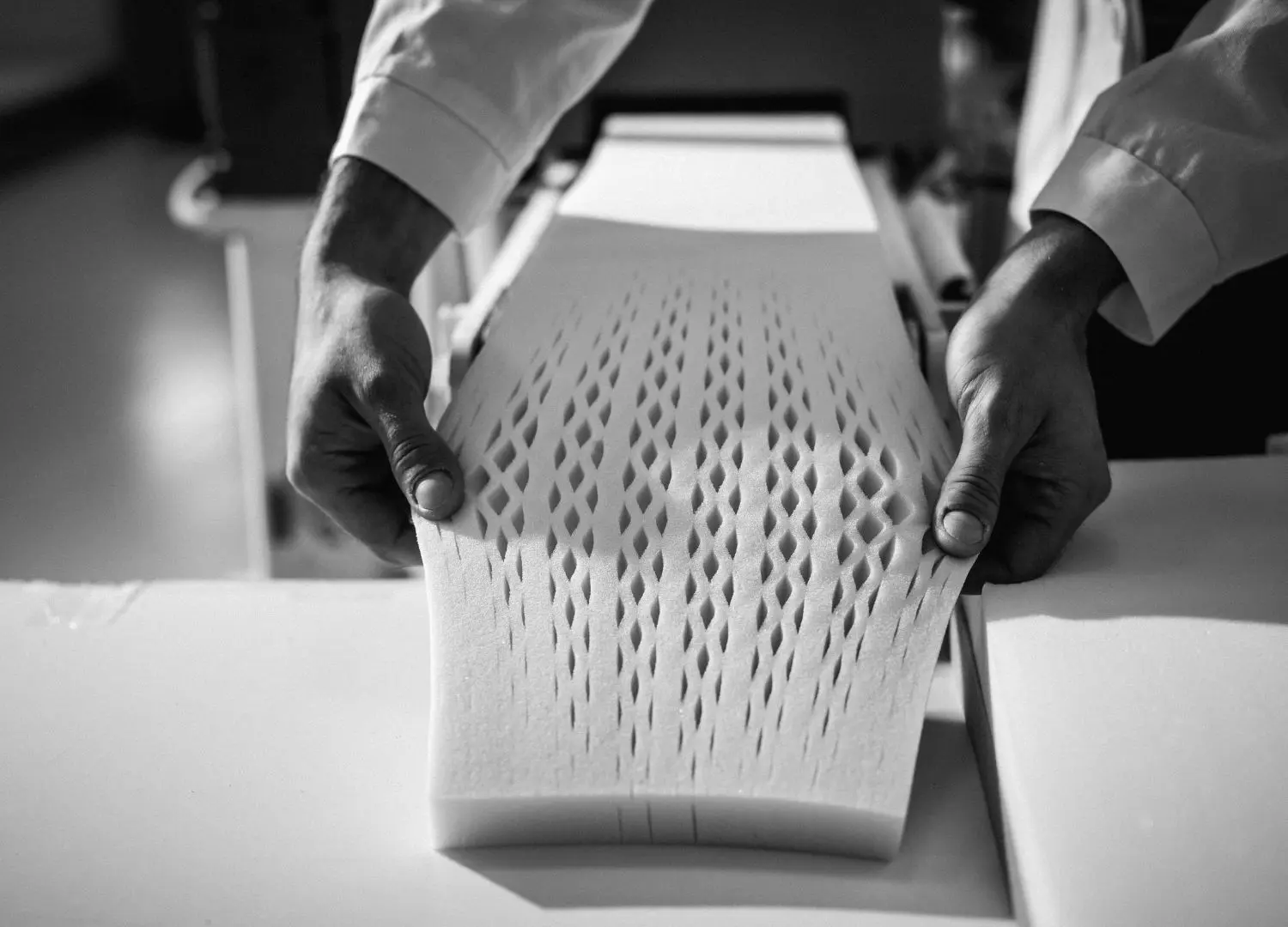Reinventing spring technology for a more sustainable comfort
By definition, design is a broad concept that encompasses both the process of creating something and using that invention for specific functions. It involves creativity, mathematics, and aesthetics, held together to solve problems or meet specific needs.

Octaspring technology is a very practical example of how this approach supports the development of better products. For years now, mattresses and cushions have been designed in many different ways to provide comfort in furniture and bedding solutions. Metal springs have originally been introduced for improving motion transfer, thanks to their well-known bouncing effect, as well as for facilitating airflow, which helps to regulate the temperature and breathability of mattresses.
Despite these advantages, such structures also come with some inconvenience due to the presence of metal structures, such as greater weight-to-volume ratios, noise, and an overall complex structure made of different materials which, in the end, affect recyclability and re-purposing of the product at the end of its life.

Know more about this innovative material:
Octaspring technology
The introduction of Octaspring technology, which is based on a specific engineered foam, allows the use of 50% less material per product, cutting CO₂ emissions in production by half, and the creation of up to 50% lighter cushioning, which of course is again a plus, considering the impact of the weight of products on transportation and mobility. This innovative material has kind of “awakened” the industry, offering improved comfort, mass reduction, and greater customization possibilities for various sectors. The material consists of individual springs made of foam that work in tandem to provide optimal support and comfort.
Properties
The foam-based spring structures showcase several remarkable properties compared to traditional materials. The engineered geometry can provide up to 8x better ventilation compared to standard foam, making it an ideal choice for applications where airflow is crucial. Additionally, each individual spring uses roughly half the weight of an equivalent foam block. This lightweight design also enables mass customization, allowing designers to create tailored solutions for local support. Moreover, by eliminating glue from the production process thanks to special welding technology, this solution is potentially more recyclable compared to available alternatives.

Design applications
The Forever Bed by Nika Zupanc is a unique and artistic piece designed in 2014 showcasing mattress and cushioning made with Octaspring technology.
The versatility of this solution led to its adoption in various industries beyond sleep solutions. In the automotive sector, luxury car manufacturers are incorporating Octaspring into their designs to provide first-class zoned comfort for passengers. This enhances passenger experience but also helps reduce seat cushion weight, contributing to fuel economy and environmental goals which is a driving trend, particularly in EVs.
Furthermore, for application in railway transportation and aviation, more enhanced, thinner springs can be created ranging from sizes of 0,5 cm thickness and 1cm diameter, up to 15 cm of thickness and 10 cm of diameter, with an extra 15-20% weight reduction.

The digital dimension
One of the latest projects, combining the physical and digital world, is the DNA mattress by Dormeo. This AI-driven, personalized mattress integrates sustainable practices throughout both its materials and its production. Using an advanced AI algorithm, an app analyzes customer’s body measurements and sleep preferences to deliver a completely customized mattress.
The Octaspring technology enables local “domain” customization at a resolution of 10 cm² , offering one of the highest precision standards in the industry. This precision not only maximizes comfort but also promotes sustainable practices by reducing material waste, aligning with the latest in eco-conscious design.

In conclusion, Octaspring technology has helped reshape originally the way we think about comfort, bedding, and furniture supports. Its mechanical properties, technical features, together with its lowered environmental footprint, make it a valid solution for applications in design where innovation and performance come together driven by efficiency and optimization.










